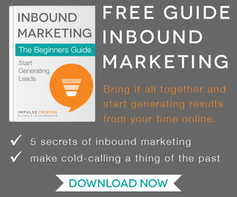 When you’re browsing the Internet - whether searching for information or shopping online - what’s the one thing that drives you insane about the websites you visit?
When you’re browsing the Internet - whether searching for information or shopping online - what’s the one thing that drives you insane about the websites you visit?
Chances are, it’s anything that makes for an unpleasant user experience.
One of the biggest commandments of inbound marketing is “thou shalt not annoy” (okay, we made that up, but you get the idea). Still, so many websites are full of elements that leave website visitors thinking, “this is so annoying!” From chat pop up windows to slow loading times, there are a ton of things that can leave a sour taste in someone’s mouth.
Wondering what not to do on your website? Let’s take a look at the six most common things that people hate about your website (and how to fix them).
Pop-Ups
Pop-ups are one of the most interruptive marketing methods out there. After all, there are few things worse than going to a website and getting a pop up that says “want a free consultation?” or “let us help you with your website.” You may think that you’re going to turn a website visitor into a customer, but we hate to break it to you: you’re just annoying your audience.
The reality is, about 85% of people visiting your website are in the awareness stage, meaning they’re trying to solve a problem or meet a need. As a result, they’re doing research to educate themselves on the best solution to their problem. So, that pop up ad that asks someone to buy from you - unfortunately, it’s not doing you any good. If you want to turn visitors into leads, try creating content that nurtures your audience down the funnel.
Cheesy Stock Photography
You know the photos of three people standing over someone’s desk pointing at a computer screen? Avoid those.
You don’t have to avoid stock photography altogether (we wrote a blog about best practices, and you can read it here [link when blog is live]). But it’s important that you avoid the cheesy stock images that don’t tell your audience anything about what you offer. Instead, use images that tell a story about what you do and what makes you different. Also, don’t be afraid to take your own images of your products, office, and staff. This gives you the opportunity to connect with your audience on an emotional level, and it shows people that you’re human - just like them.
 A Non Mobile-Friendly Layout
A Non Mobile-Friendly Layout
If your website isn’t optimized for mobile, you’re losing out on website visitors. Having a responsive website isn’t just an option anymore - especially considering 57% of online users won’t recommend companies with poor mobile sites. People access content across all sorts of devices, and it’s essential that your site is optimized for all screens - from a Samsung Galaxy to a 27” Retina iMac. Design your website to be fully responsive, so your visitors can access it regardless of what device they’re using.
Long Forms
It’s no secret that the more information you have about a potential customer, the easier it is to market to them. However, asking someone for their address, maiden name, and age isn’t just unnecessary - it’s invasive.
Whenever you’re creating forms for your contact page or offer pages, think about the value that you’re providing. The more valuable the content, the more information you can ask for. Still, be mindful of what types of personal information you’re asking people to give. As a general rule of thumb, unless you’re providing someone with a bottom of the funnel offer that targets people who are ready to buy, asking for name, email, and maybe company name is more than enough.
 Outdated Design
Outdated Design
We’ve all been in a situation where we do a search on Google, click on one of the top ranking pages, and land on a website that looks like it was built in 1999.
Today, a person’s first impression of your business is based on your website. If it’s been awhile since you’ve updated your website design, consider hiring a web design agency to help you make your site more modern. Generally, you should redesign your website every few years or when it’s no longer helping you achieve your goals. Don’t forget to refresh your content every year or so to ensure that you’re providing website visitors with the more current and relevant information.
Slow Loading Time
We live in a society of instant gratification, and people have a short attention span when they’re online. Even if you have the best website out there, people will go somewhere else if your website takes too long to load. No one wants to wait 10 seconds for an article to load when they can find similar content on someone else’s site.
Test your website on several different devices to see how long it takes to load. If you notice that it’s taking quite a bit of time, do some digging to find the source of the problem, and do your best to fix it (or hire someone who can).
What website elements drive you nuts? Let us know in the comments!
 Remington Begg
Remington Begg